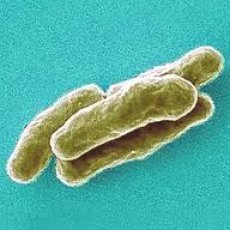New publications
Scientists have found a reason why the body cannot defend itself against tuberculosis
Last reviewed: 01.07.2025

All iLive content is medically reviewed or fact checked to ensure as much factual accuracy as possible.
We have strict sourcing guidelines and only link to reputable media sites, academic research institutions and, whenever possible, medically peer reviewed studies. Note that the numbers in parentheses ([1], [2], etc.) are clickable links to these studies.
If you feel that any of our content is inaccurate, out-of-date, or otherwise questionable, please select it and press Ctrl + Enter.

Tuberculosis, which kills more than 2 million people each year, is caused by bacteria known as Mycobacterium tuberculosis - or Mtb.
The target cells for mycobacteria are immunocytes. By penetrating them, mycobacteria avoid the body's immune response.
Until now, scientists had only a general understanding of how tuberculosis infection develops. A study by specialists from the Infection and Immunity Research Centre in Vancouver has shown that mycobacteria produce a specific protein that allows them to deceive the body's security system.
The results of the study were published in the Journal of the National Academy of Sciences.
"Mycobacteria have managed to completely fool our immune system into believing they are not there, which is why they are such effective killers," said Dr. Yossef Av-Gay, a researcher at the Center for the Study of Infection and Immunity. "We found that the cells responsible for identifying and destroying invading bacteria are tricked by a special protein that blocks the immune cells' ability to recognize and destroy mycobacteria."
How does this happen?
Macrophages are responsible for identifying and eliminating dangerous microorganisms. Typically, macrophages, by ingesting bacteria or other infectious agents, begin to concentrate them in certain areas. Then, special cell components migrate to these controlled areas, releasing acidic enzymes, dissolving the bacteria. This system works well against most infectious agents. However, in the case of tuberculosis, this immune response is switched off.
When mycobacteria are engulfed by macrophages, they release a protein called PtpA, which blocks two separate mechanisms needed to create the acidic environment that helps kill bacteria. As a result, mycobacteria, like a Trojan horse, continue their life activity in the cells of the immune system, hiding from the immune system.
"We have been studying the interaction between tuberculosis bacteria and human macrophages for the last ten years," says Dr Av-Gay. "We are very pleased with this discovery. By discovering the tricks that the mycobacteria use, we will be able to develop more effective drugs to fight the disease."
Tuberculosis is the leading cause of death among infectious diseases in the modern world. Every 20 seconds one person dies from tuberculosis, and about 4,400 people die every day. According to WHO estimates, one third of the world's population is infected with tuberculosis.

 [
[